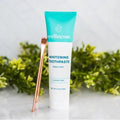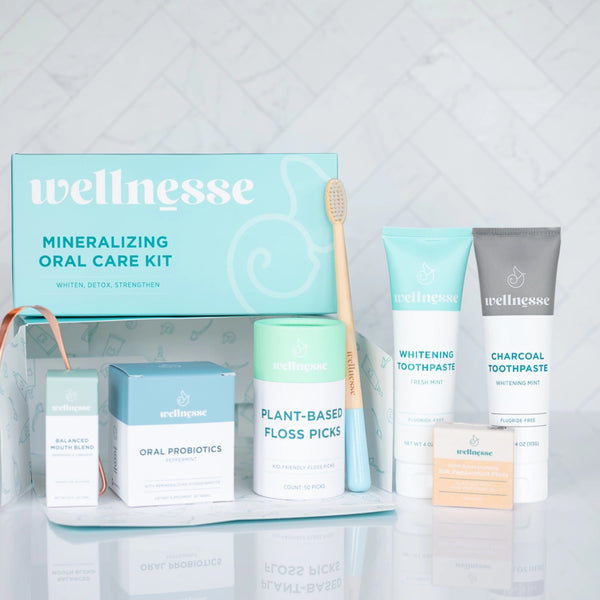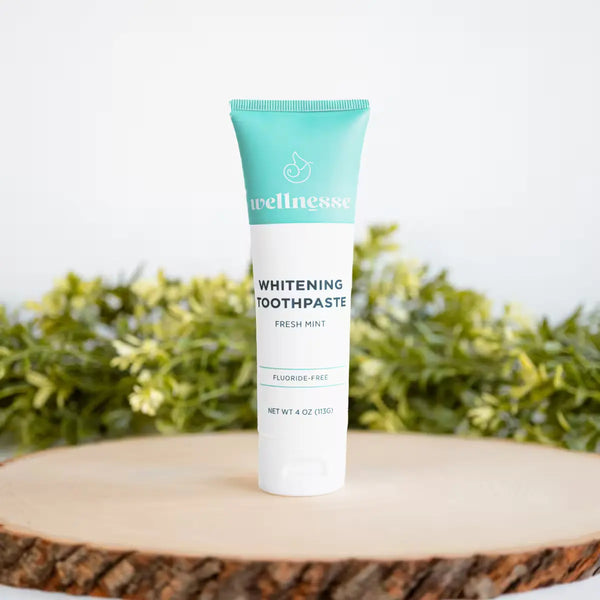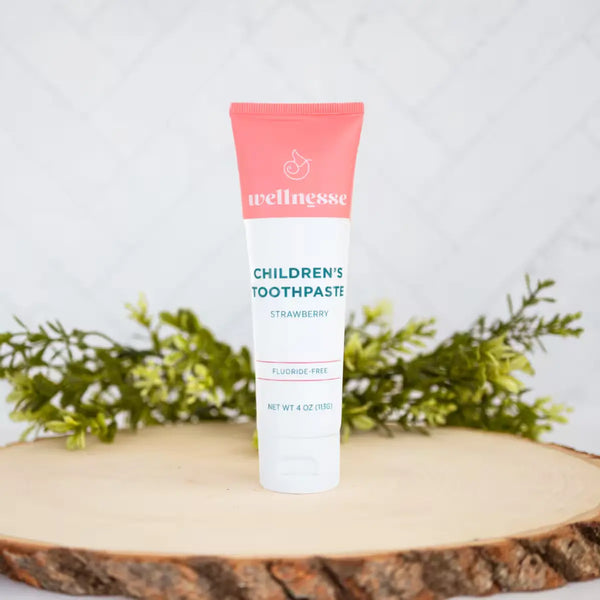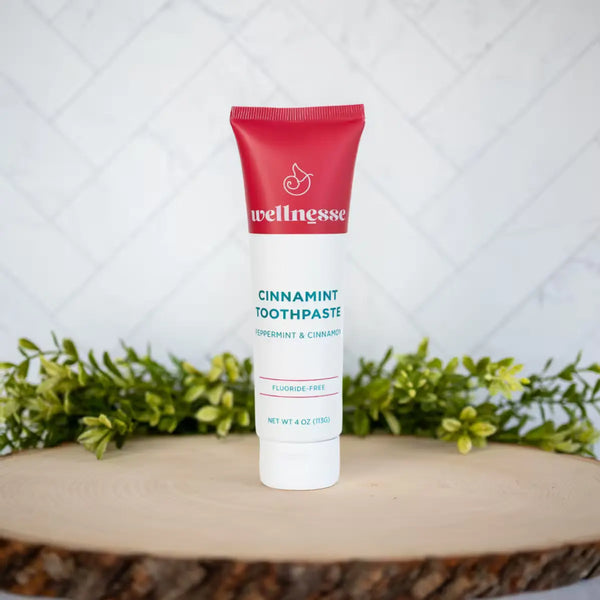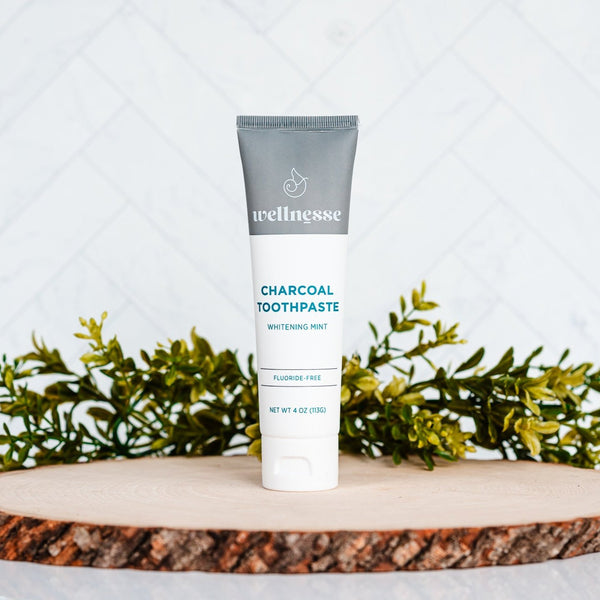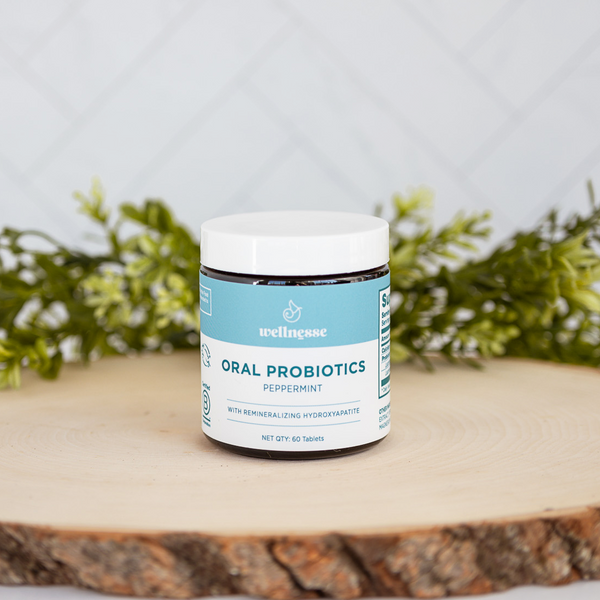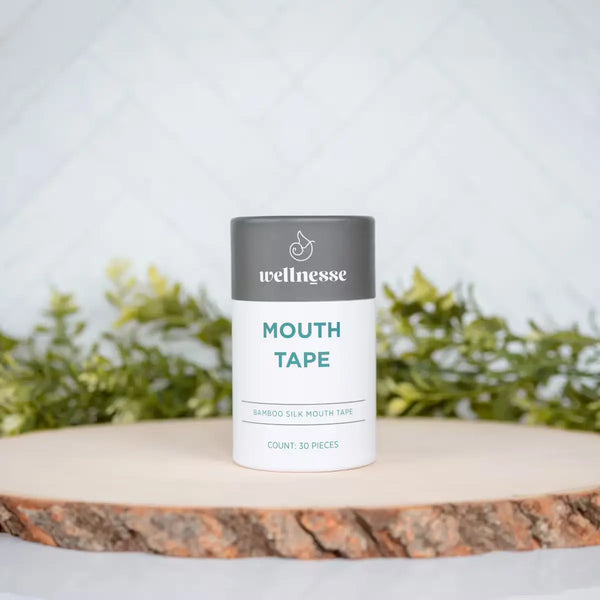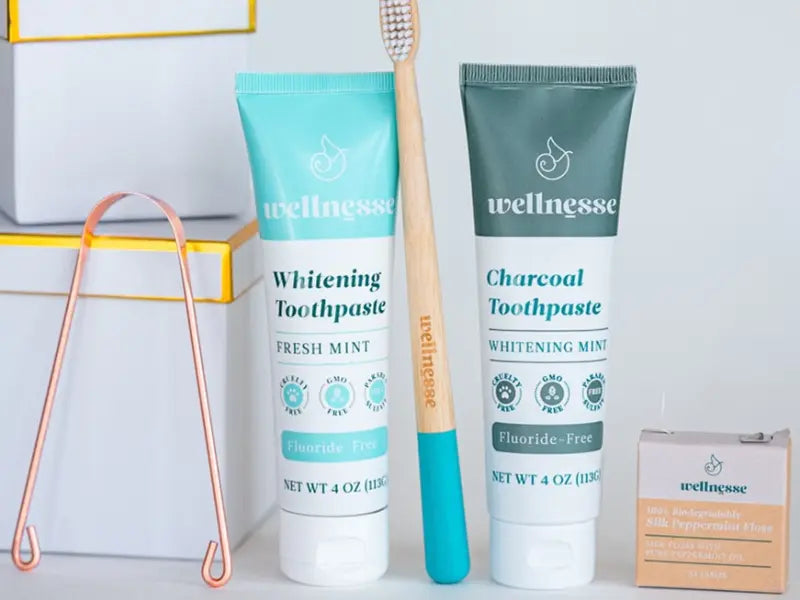The quest for a naturally effective toothpaste often leads consumers to hydroxyapatite toothpaste. With growing awareness of dental health and the pursuit of natural alternatives, this toothpaste is gaining traction. Not only does it promise to rebuild enamel, but it also does so without the use of fluoride, which some people prefer to avoid. Understanding the science behind hydroxyapatite and its role in dental care is crucial for individuals seeking to make informed decisions about their oral hygiene products.

What is Hydroxyapatite?
Hydroxyapatite is a naturally occurring mineral form of calcium apatite. It is the main component of tooth enamel and bone, making up approximately 97% of enamel's composition. This biocompatible substance can integrate seamlessly with the body's structures. When used in toothpaste, hydroxyapatite serves as a biomimetic agent, meaning it mimics the natural mineralization process of tooth enamel. This capability allows it to effectively fill in microscopic cracks and rebuild the surface, enhancing the tooth's strength and resistance to decay.
The use of hydroxyapatite in oral care is rooted in its ability to bond with teeth and promote remineralization of the tooth enamel. Unlike fluoride, which works by attracting minerals like calcium and phosphate back to the teeth, hydroxyapatite directly replenishes lost mineral content. This direct application offers a more immediate solution for those concerned about enamel erosion.
Historical Use in Dentistry
Its biocompatibility and structural similarity to bone made it an ideal candidate for various medical applications. In the dental sphere, it was initially used to coat implants to improve osseointegration, the process by which bone fuses to an implant. This success in dental restoration paved the way for its inclusion in consumer dental products, such as hydroxyapatite toothpaste.
Rising Popularity of Natural Toothpaste
The trend toward natural toothpaste solutions reflects a broader consumer movement that prioritizes health-conscious and environmentally friendly products. Consumers are more informed and increasingly wary of synthetic ingredients found in conventional toothpaste. This has led to a surge in demand for alternatives that offer both safety and efficacy. Natural enamel repair toothpaste fits perfectly into this niche, offering a natural way to strengthen teeth without the potential side effects associated with fluoride.
Understanding Enamel and Its Importance
Structure and Function of Tooth Enamel
Tooth enamel is the hardest substance in the human body, even stronger than bone. It is primarily composed of minerals, predominantly hydroxyapatite, a crystalline calcium phosphate. This mineral composition is what grants enamel its unparalleled strength. Enamel's primary function is to protect the inner layers of the teeth, namely the dentin and pulp, from the harmful effects of acids, bacteria, and physical abrasion. The unique composition of enamel allows it to withstand the daily rigors of biting, chewing, and exposure to varying temperatures.
However, despite its toughness, enamel does not possess living cells. This means it cannot regenerate or heal itself once it is damaged. The non-living nature of enamel makes it imperative to maintain its integrity through preventative care and the use of effective dental products such as micro-hydroxyapatite toothpaste.
Causes of Enamel Erosion
Understanding these diverse influences is essential for effective prevention and maintaining optimal oral health. By identifying the primary culprits, individuals can develop targeted strategies to protect their smiles against progressive damage and maintain long-term dental health.
-
Acidic Dietary Habits: The frequent consumption of highly acidic foods and beverages plays a substantial role in weakening tooth enamel. Citrus fruits, carbonated sodas, sports drinks, and even certain fruit juices directly expose teeth to acids that chemically dissolve their mineral structure. The prolonged exposure, especially when these items are sipped over extended periods, amplifies their erosive potential. Additionally, while not directly acidic, sugary foods contribute indirectly by fostering oral bacteria that metabolize sugars into harmful acids, further exacerbating enamel degradation.
-
Gastric Acid Exposure: Medical conditions involving the regurgitation of stomach acids, such as Gastroesophageal Reflux Disease (GERD) or frequent vomiting due to various illnesses or pregnancy, pose a severe threat to enamel integrity. Stomach acids are exceptionally corrosive and can cause widespread and rapid erosion, particularly affecting the inner surfaces of the teeth.
-
Mechanical Wear and Tear: Beyond chemical erosion, certain physical habits can directly contribute to enamel loss. Aggressive tooth brushing, especially with stiff-bristled toothbrushes or abrasive toothpastes, can physically wear down enamel over time. This effect is compounded if brushing occurs immediately after consuming acidic foods, as the enamel is temporarily softened and more vulnerable to abrasion. Furthermore, bruxism, or habitual teeth grinding and clenching, can lead to mechanical attrition of the enamel, making the affected areas more susceptible to subsequent chemical erosion.
-
Compromised Saliva Production: Saliva serves as a crucial natural defense mechanism against enamel erosion. Conditions like xerostomia, or dry mouth, which can be caused by certain medications (e.g., antihistamines, antidepressants) or medical conditions (e.g., Sjögren's syndrome), drastically reduce saliva flow. Without sufficient saliva to neutralize acids, wash away food particles, and provide essential remineralizing minerals like calcium and phosphate, teeth become far more vulnerable to acid attacks, accelerating the rate of enamel degradation and increasing the risk of cavities.
-
Genetic Predisposition and Eating Disorders: While less common, certain genetic factors can predispose individuals to enamel erosion by resulting in naturally thinner or weaker enamel. This inherent fragility makes these individuals more susceptible to damage from otherwise manageable exposures. Moreover, some eating disorders, beyond causing frequent vomiting, can lead to significant nutritional deficiencies that compromise overall oral health and indirectly affect the resilience and integrity of tooth enamel, making it more prone to both chemical and mechanical breakdown.
Regular dental check-ups remain indispensable for the early detection of enamel erosion, allowing for timely intervention and the preservation of long-term dental health and a strong, healthy smile.
Signs of Enamel Damage
Enamel, the strongest substance in the human body, acts as a crucial protective layer for our teeth. Despite its resilience, it remains vulnerable to damage, and recognizing early warning signs is crucial to prevent irreversible deterioration. Below are subtle cues:
-
Increased Tooth Sensitivity: One of the earliest and most common signs of tooth sensitivity and enamel loss. This occurs when the enamel thins, exposing the underlying dentin, a porous tissue that contains microscopic tubules leading to the tooth's nerves. Consequently, stimuli such as hot or cold beverages, sweet foods, or even acidic items can directly stimulate these nerves, causing sharp, fleeting pain or a dull ache. This discomfort, experienced during everyday activities like eating or brushing, serves as a clear indication that the enamel's protective function is diminishing.
-
Tooth Discoloration: This happens because, as the translucent enamel wears away, the naturally yellowish dentin beneath becomes more prominent and visible. In some cases, teeth might even develop a grayish hue due to altered light reflection off the compromised surface. While these color changes are often gradual and easily overlooked, they provide an important visual cue to ongoing enamel damage, signaling a need for attention.
-
Rounded or Transparent Edges: As the enamel wears away, these edges can appear thinner and almost translucent. This physical change is a direct consequence of enamel loss, indicating that the tooth's protective layer is visibly deteriorating and requires professional assessment.
-
Visible Cracks and Chips: In the more advanced stages of enamel damage, the structural integrity of the teeth becomes compromised, resulting in visible cracks and chips. These can range from fine hairline fractures to more noticeable breaks. Weakened enamel is less capable of withstanding the forces of chewing and biting, making it susceptible to such damage. Even a small chip is a significant indicator of compromised enamel, potentially creating pathways for bacteria and increasing the risk of cavities. These visible flaws not only affect aesthetics but also the tooth's functional strength.
Advancements like toothpaste for enamel remineralization offer promising solutions for strengthening and remineralizing enamel, demonstrating that proactive measures and professional guidance are key to preserving a strong, healthy smile for years to come.

Irreversibility of Enamel Demineralization
While advances in remineralization therapies like hydroxyapatite toothpaste offer significant hope for those concerned about enamel erosion, it is crucial to understand that not all enamel damage can be reversed. The process of enamel demineralization is dynamic and occurs in stages, each with different implications for oral health and the potential for repair.
How Toothpaste Rebuilds Enamel
The Science Behind Enamel Remineralization
Enamel remineralization is a critical process in maintaining oral health, as enamel, the outermost layer of our teeth, is constantly exposed to acidic challenges from food and drink. When enamel demineralizes due to these acids, it becomes susceptible to decay. However, our bodies can naturally repair this through remineralization, where minerals like calcium and phosphate redeposit into the enamel. This process is dynamic and continuous, with saliva playing a crucial role in providing the necessary minerals and maintaining an optimal pH balance to facilitate this natural repair mechanism.
Comparing Hydroxyapatite to Fluoride
When evaluating the effectiveness of hydroxyapatite versus fluoride for enamel remineralization and tooth protection, it is essential to consider both the scientific evidence and the perspectives of dental professionals. Recent advancements in dental research have brought hydroxyapatite into the spotlight as a compelling alternative. Unlike fluoride, which relies on a chemical reaction to enhance the enamel’s resistance, hydroxyapatite particles integrate into the enamel structure, filling in microscopic defects and repairing surface damage. This direct approach has been shown to effectively restore mineral density and improve the smoothness of the enamel surface.
Multiple scientific studies have compared the efficacy of hydroxyapatite and fluoride. For instance, a 2019 laboratory study found that enamel repair toothpaste was as effective as fluoride toothpaste in preventing demineralization and promoting the remineralization of early caries lesions. Similarly, randomized clinical trials have demonstrated that hydroxyapatite can match fluoride in its ability to rebuild enamel and reduce sensitivity, particularly in populations at higher risk for cavities.
Safety and Side Effects
Hydroxyapatite toothpaste is widely recognized for its strong safety profile, making it an appealing choice for individuals seeking a gentle yet effective alternative to traditional fluoride-based products. As a biomimetic mineral that naturally makes up the majority of tooth enamel and bone, hydroxyapatite is inherently biocompatible and non-toxic. This close resemblance to the body’s tissues means that this is generally well-tolerated, even by those with sensitive mouths or a history of irritation from conventional toothpaste ingredients. No significant adverse effects associated with hydroxyapatite toothpaste, supporting its reputation as a safe option for daily oral care.
Optimal Usage and Concentration of Hydroxyapatite Toothpaste
Comprehending the optimal concentration and usage guidelines is essential for achieving the best enamel-rebuilding results. A 5% concentration strikes a balance by providing sufficient mineral content to support enamel repair while maintaining optimal particle dispersion for maximum contact with tooth surfaces.
Product Forms and Alternatives
Hydroxyapatite has become a sought-after ingredient in oral care, and its versatility is reflected in the range of product forms now available to consumers. Alongside traditional toothpaste, hydroxyapatite is also available in powder form. Tooth powders containing hydroxyapatite offer a more concentrated and minimalist approach, often appealing to those seeking fewer additives and a customizable experience. Users can sprinkle the powder onto a wet toothbrush or combine it with a small amount of water to create a paste. This form can be especially attractive to individuals interested in zero-waste or plastic-free oral care, as powders are often packaged in recyclable or reusable containers. Another innovative option is hydroxyapatite toothpaste tablets. These solid, chewable tablets are designed for portability and precise dosing. By chewing a tablet and brushing as usual, users can enjoy the benefits of hydroxyapatite without the mess or waste associated with traditional tubes. Tablets are particularly popular among travelers and those seeking a sustainable, on-the-go solution. Additionally, hydroxyapatite is sometimes found in mouthwashes and chewing gums, offering alternative delivery methods for those who prefer not to use toothpaste or powder. Mouthwashes with hydroxyapatite can help coat the teeth after brushing, while chewing gums may provide a low-effort way to maintain enamel health throughout the day.
Choosing the Right Remineralizing Toothpaste
Key Ingredients to Look For
It’s crucial to focus on the active ingredients that will effectively strengthen and protect your enamel. Hydroxyapatite is among the top ingredients to consider due to its natural ability to integrate with the tooth structure. Look for other supportive ingredients like xylitol and calcium phosphates. Xylitol is a sugar alcohol that inhibits the growth of harmful bacteria in the mouth, thereby reducing the risk of cavities. Calcium phosphates work synergistically with hydroxyapatite to enhance enamel remineralization. Some toothpastes also include natural extracts like green tea or aloe vera, which offer additional antibacterial and soothing properties. When these ingredients are combined, they create a powerful formula that not only repairs enamel but also maintains overall oral health.
Understanding Product Labels
Navigating product labels can be daunting, but understanding them is key to choosing the best toothpaste for your needs. Labels should clearly list active ingredients, with their concentration levels prominently displayed. For hydroxyapatite, a concentration of around 10% is generally considered adequate for enamel remineralization. The presence of certifications from dental associations can also serve as a mark of credibility, indicating that the product has undergone rigorous testing.
The Role of Toothpaste in Oral Health
Daily Oral Hygiene Practices
Maintaining daily oral hygiene is essential for preventing dental issues, including cavities and gum disease. Brushing your teeth twice a day with a high-quality toothpaste is essential. Consistent and effective brushing techniques are vital. A gentle circular motion is recommended to ensure that the hydroxyapatite particles can thoroughly coat the teeth. This ensures that the active ingredients have ample opportunity to interact with the tooth surface. Research indicates that optimal brushing duration should last at least two minutes to maximize enamel restoration benefits. Regular use of hydroxyapatite toothpaste can lead to noticeable improvements in enamel health and overall oral hygiene.
Combining Toothpaste with Other Oral Care Products
Enhancing oral health involves more than just choosing the right toothpaste. Flossing removes debris and plaque from areas that brushing alone cannot reach, which is essential for preventing gum disease. When combined with hydroxyapatite toothpaste, flossing ensures that the entire mouth benefits from comprehensive care, promoting healthier gums and stronger teeth. Using a mouthwash can further protect against oral health issues. Opt for an alcohol-free mouthwash to prevent mouth dryness, which can promote bacterial growth. An ideal choice would be a mouthwash with added minerals or ingredients that support enamel health.
Comparing Hydroxyapatite Toothpaste Brands
Generally, these toothpastes are priced higher than conventional fluoride options. This price difference is attributed to the advanced technology and high-quality ingredients used in their manufacture. However, the effectiveness of hydroxyapatite in rebuilding enamel and reducing sensitivity justifies the investment for many users.
How to Order Natural Toothpaste Online
Navigating the online marketplace for natural toothpaste can be overwhelming, but a few strategies can simplify the process. First, it is essential to research and identify reputable retailers and brands that are known for their quality products. Pay attention to verified purchase reviews, which are more likely to provide honest feedback about the product's effectiveness in rebuilding enamel. When ordering online, consider subscription services offered by many brands, which can reduce costs and ensure a regular supply of toothpaste. This option is particularly beneficial for those committed to using this toothpaste as a long-term oral health solution.

Embracing natural solutions is not just a trend but a return to nature's wisdom in promoting health. As more people recognize the importance of sustainable and effective oral care, products that offer the benefits of hydroxyapatite toothpaste will continue to gain popularity. The journey to optimal oral health begins with informed choices, and hydroxyapatite toothpaste stands out as a testament to how science and nature can collaborate to enhance well-being.
